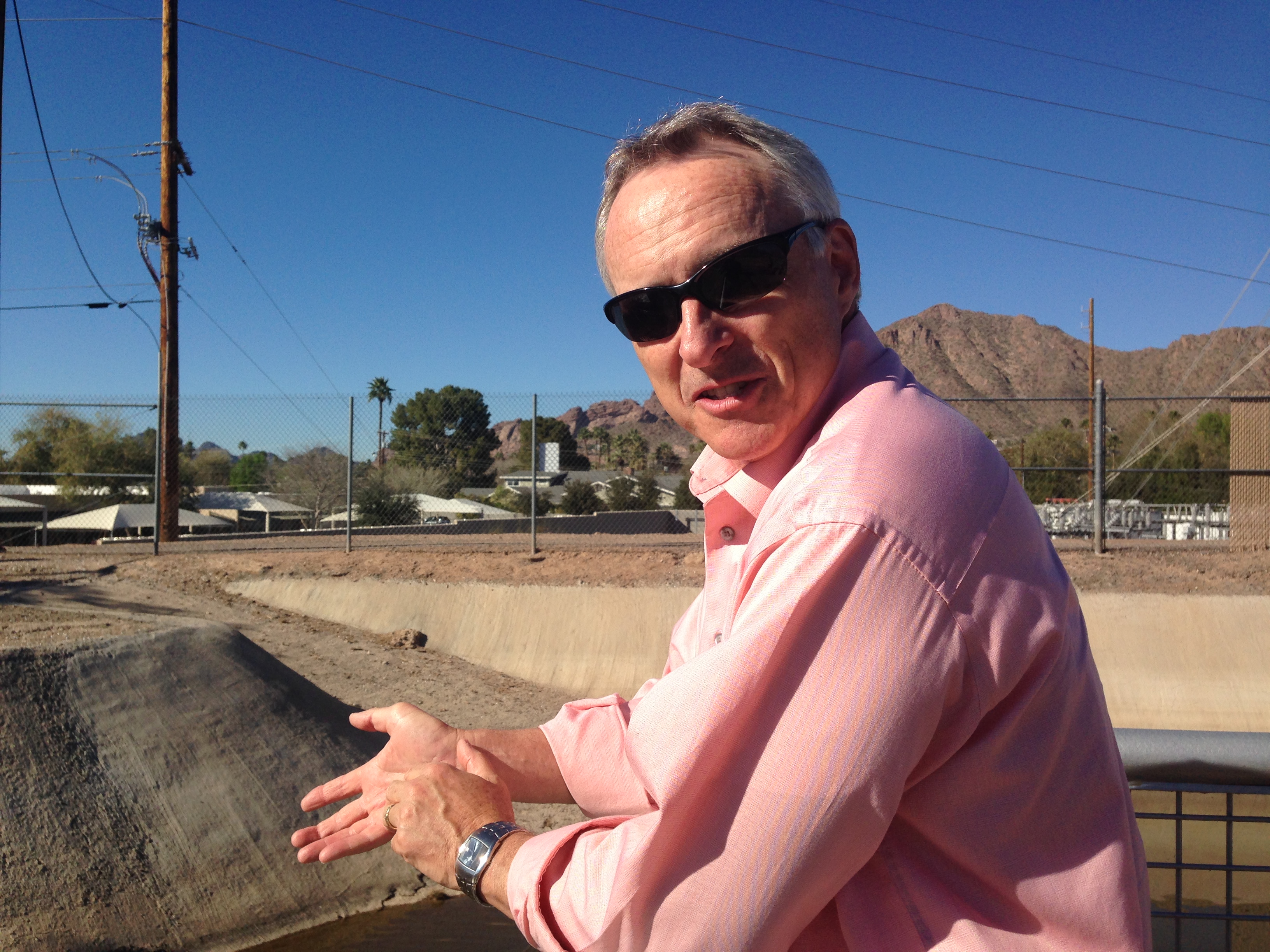Campaign for clean water in Arizona highlights forests, and beer
by Elizabeth MillerListen to this story
Water in central Arizona comes from several sources, one of which is melted snow from the northern part of the state. The water is clean and safe, but forest fire residue from places like the Coconino National Forest threatens its quality.
Some central Arizona residents don’t know about the connection between the forests and the water they use every day. And now there’s an effort to educate central Arizonans on where their water comes from and how forest restoration can ensure clean water. It’s called Tap to Top. The partners include the Salt River Project, the National Forest Foundation, and SanTan Brewing Company.
Arizona’s Salt River Project is leading the project. As one of central Arizona’s largest water suppliers, the company’s business relies on clean water. To supply water to about 1 million Greater Phoenix residents, they rely on the Salt and Verde rivers, 6 reservoirs, groundwater, and reclaimed water.
The Phoenix area in particular receives water from all of these sources in addition to Central Arizona Project water, which comes from the Colorado River.
Arizona Falls in Phoenix is part of the Arizona Canal, the largest canal within the Salt River Project canal system. Bruce Hallin, director of water rights and contracts for the Salt River Project, said the condition of forests has become a problem.
“Our forests, for a variety of reasons, have not been managed in a proper fashion here over the last 2 to 3 decades,” said Hallin.
“The end result has been forests that are overcrowded, with a lot of fuel load, and essentially we have these major, devastating, catastrophic wildfires that have significant impact on the watershed.”
To encourage the connection between water in the valley and healthy forests, SRP has been working with the forest service, rural communities, and state and local governments. Hallin said there is a knowledge gap between what’s happening in a watershed miles away and the water supply in the valley.

Bruce Hallin, Director of water rights and contracts for the Salt River Project
Barbara Edwards of Phoenix said she never paid attention to the connection between water and forest health.
“I don’t think about it, and I probably should,” said Edwards. “ I’ve heard about snow melt-off into the canals, but that’s about it.”
Joe Hill from Queen Creek, Arizona said the need to understand the connection is urgent.
“We still don’t pay a lot of attention to it,” said Hill. “If people understand where it comes from, and also that there is a threat to it, we’re actually in drought cycle just like everybody else,” he said.
Meg Herbert is the graphic designer and social media manager for SanTan Brewing Company, the largest local craft brewery in Arizona.
“Water is such a huge part of beer and what we do,” said Herbert. “We are definitely concerned about making sure we have the greatest quality of water in our product.”
The brewery will have displays and posters for the Tap to Top project, and will host events in support of the Northern Arizona Forest Fund, which sponsors projects related to watershed health.
One project is devoted to restoring the Coconino National Forest. Planning is underway to develop wildfire treatments and remove excess trees that may increase the risk for fire.
For Herbert, the Tap to Top’s message is simple.
“Protecting our forests, preserving our water. It’s very basic. Getting people involved in learning what they can do,” said Herbert.
Bruce Hallin of The Salt River Project (SRP) says education is necessary.
“It’s best that they’re being educated on what the situation is here in Arizona, so that they have a good understanding of what our supply and demand situation is and what they need to do as individual residents to be proactive in managing their water supply,” said Hallin.
In Arizona, water sources must be sustainable and reliable to endure dry periods.
“We recognize the need that we do live in a desert, and water certainty is critical to quality of life and economic development here in the valley,” he said.


Elizabeth Miller
Elizabeth Miler is a general assignment reporter for ideastream in Cleveland, Ohio.
Prior to that, she interned at NPR at the National Desk. Elizabeth graduated with a degree in broadcasting and mass communications in May 2015 from Baldwin Wallace University in Berea, Ohio. In her time there, she worked at the campus radio station, WBWC, and as a weekend reporter for WAKR-AM in Akron. In her spare time, Elizabeth enjoys a good cup of coffee and live music.
